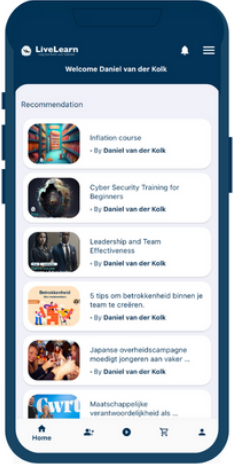
Artikel
29
May
How to Run a Successful Phishing Simulation
Cybersecurity is a growing concern for organizations from any industry. Hackers are getting craftier with their methods and showing no signs of slowing down. Management and team leaders should keep up with cybersecurity trends to ensure their employees get a drop on potential threats to prevent making multi-million dollar mistakes.
What Is a Phishing Simulation?
Security professionals run phishing simulations to test the effectiveness of an organization’s existing cybersecurity measures. These professionals create mock phishing emails and design online materials to mimic real-world threats malicious actors would use.
Phishing simulations are an excellent way to teach employees about cybercrime awareness. They are increasingly beneficial to businesses nowadays since real phishing attacks can harm a company’s performance and lead to huge losses.
According to the Cybersecurity & Infrastructure Security Agency (CISA), 84 percent of employees interact with malicious emails within 10 minutes of receiving them. These interactions include clicking spoofed links, downloading attachments loaded with malware and providing sensitive information. An FBI report also says phishing attacks cost businesses $52 million in losses in 2022.
Benefits of a Phishing Simulation
There are several advantages of running a phishing simulation for a business:
- Prepare employees for potential attacks
- Prevent costly repairs and ransom payments
- Enhances existing cybersecurity measures
- Creates a safety mindset among employees
- Increases alertness to phishing attacks
- Measures levels of corporate and employee vulnerability
- Protects high-value data for the company and employees
- Promotes cybersecurity culture
5 Top Tips for Running a Phishing Simulation
Phishing attacks are more effective than people think because they believe they won’t fall for the tactics that hackers typically use. Bad actors are banking on this misplaced confidence and often target individuals they perceive as an organization’s weakest link. Companies that don’t prioritize cybersecurity will soon realize how costly that mistake is.
The dangers are especially true for organizations that allow remote work setups for their employees. A survey found that 55 percent of people under 30 admitted making more mistakes while working at home. The error could be as innocent as opening an email, providing work credentials or clicking a link from an alleged “trusted source.”
Remote work setups are a blessing for many employees, but it comes with certain risks that companies should take seriously. Business leaders and managers should proactively improve cybersecurity for all remote or on-site employees.
Here are some tips to pull off a successful phishing simulation.
1. Plan and Identify Targets
Identify high-risk employees and other relevant parties to gauge the organization’s preparedness against phishing attacks. Make a list of top departments and individuals likelier to get targeted by threat actors. It’s a good idea to start there to maintain the realistic nature of the simulation.
From there, move on to a larger target population. Hackers will always single out an organization’s weakest link — its employees. If possible, scale up and include all employees to test the effectiveness of existing cybersecurity measures.
2. Design Attack Simulations
Create emails, landing pages, websites and other online materials that mimic real-world phishing attack scenarios. Make them as believable as possible by adding realistic subject lines, content and images. Use common phishing signals like the following:
- Misspelled words and use of bad grammar
- Emails from unknown senders
- Urgent commands to provide sensitive information
- Attachments that have suspicious origins and unfamiliar extensions
- Odd-looking links
These are just some phishing techniques used in real-world attacks. Attackers change their strategies now and then to reach as many targets as possible. Try to incorporate different phishing attacks to test employees rigorously.
3. Send Phishing Attack Emails
Email the targeted individuals and departments after finalizing the phishing simulation test. Turn on tracking to see who opens it and how employees interact with the test. Tracking will allow data gathering to see who reported the phishing emails to the IT team.
If possible, send emails in batches to avoid employees tipping one another. Use different themes to make the simulation more realistic. Hackers often use a variety of attacks to target different individuals.
Threat actors use time-based attacks around annual store sales, tax seasons and holidays to make their emails more enticing and believable. Internal emails from hackers pretending to be a member of an organization look realistic to employees because they view the sender as part of their network.
4. Analyze Results
Review the results of the simulation and look for patterns. Check who opened the emails, clicked on links and attachments and other employee behavior. Be thorough when analyzing the data to gauge the actual vulnerability of the company.
Phishing simulations are more effective when monitored. This allows the management to pinpoint particular security weaknesses and address them with future policies and training.
5. Educate and Replicate
Prevention is better than cure in cybersecurity. Identify which employees find it challenging to keep up with the tests and show them how to be more proficient in detecting phishing attacks. Provide mandatory training and educate employees on proper cybersecurity measures. If the simulation goes well, replicate existing best practices and further teach employees how to improve their online habits.
Investing in Cybersecurity Tools and Training
Companies should prioritize cybersecurity and see it as an investment. Teaching employees proper security practices will benefit them and the organization simultaneously. Managers can request to use cybersecurity tools to create effective phishing simulation campaigns. These tools are often customizable and allow test administrators to scale the program as needed.
Organizations can also consider working with external partners specializing in cybersecurity awareness. Working with cybersecurity professionals will help improve knowledge retention and create a safety culture in the company.
What's your reaction ?
Follow us on Social Media
Some Categories
Recent posts

December 22, 2025
Creating a Culture of Safety in Hospitality: Best Practices

December 22, 2025
Schuldbedragen van zzp'ers bij Belastingdienst hoger geworden

December 18, 2025
KPI’s bepalen, monitoren en bijsturen: zo doe je dat

December 15, 2025
Hoogste Europese rechter bevestigt minimumloonrichtlijn EU-landen

December 09, 2025
Non-bancaire financiering: zó regel je dat

 Inloggen
Inloggen
 Registreren
Registreren






Comments (0)
No reviews found
Add Comment